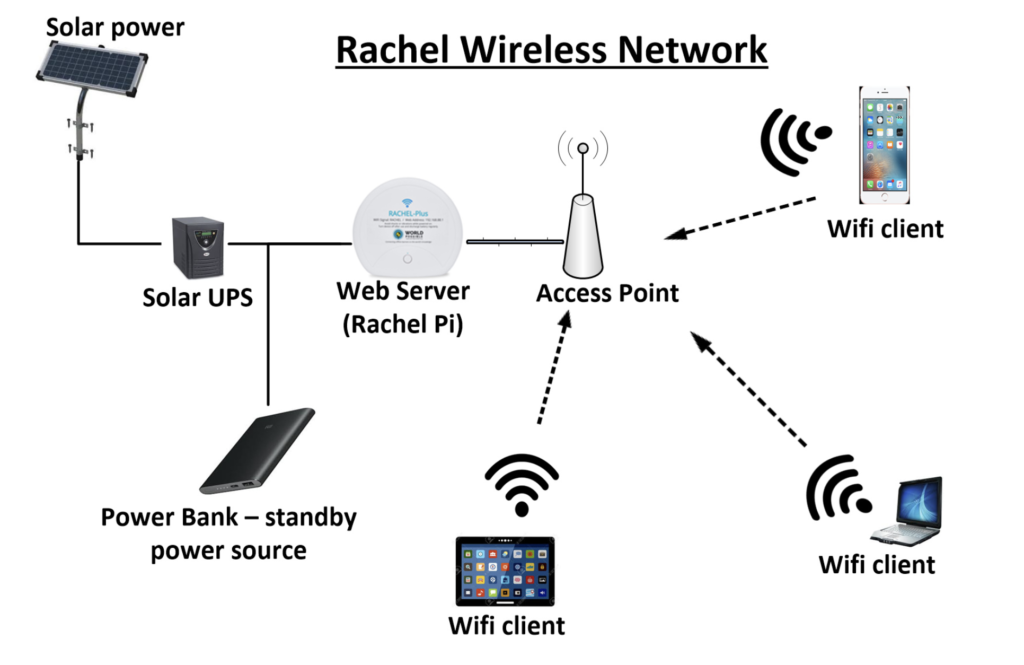Tiny Homes and Networked Communications

Headline
Access to and management of communications in ‘tiny home’ neighborhoods will be a community common good. This design parallels my earlier descriptions of future energy, agricultural, and transportation systems.
Scope
First up, what will be the component elements of such an integrated system? I see them including legacy land telephone landlines, cable television, fiber to the home (FTTH), and WiFi Mesh networks. Technically these are known as wireless community networks or WCNs. If coupled with the community energy network, it would look like this:

Note that this topology does not include satellite systems such as Dish, Direct TV, Hughes, or, recently, Starlink Low Earth Orbit (LEO) systems. These systems are point distribution -from satellite to individual reception stations usually mounted on personal residences. Current contracts prohibit sharing streaming with this technology among multiple homes. However, this business model is evolving as more communities opt for networked services.
What Would be Different
From a business perspective, I am proposing a move from retail delivery of these various communications services to a wholesale model. Currently, residents individually have several service providers. For example, one vendor for cell phones, cable, satellite service, and possibly a landline backup. That’s potentially four vendors to manage, pay and deal with customer service issues.
Bundling these services into one single point of access and THEN making distribution over a community-owned and operated network simplifies things greatly, thus reducing administration costs (and time) and offering lower individual expenses through economies of scale.
Residential Internet Service Provider (ISP)
“AnInternet service provider(ISP) is an organization that provides services for accessing, using, managing, or participating in the Internet. ISPs can be organized in various forms, such as commercial, community-owned, non-profit, or privately owned.
Internet services typically provided by ISPs can includeInternet access, Internet transit, domain nameregistration, web hosting, Usenetservice, and colocation.” Source: https://en.wikipedia.org/wiki/Internet_service_provider
I envision these community networks as also becoming community good ISP.
This will provide two significant advantages for residents. First, they can be engineered to provide redundant Internet access so if one route fails (i.e., cable fiber), another can automatically switch over access, such as hard-wired landlines.
Secondly, bundling again offers the community pricing power through economies of scale. 100 homes have more pricing power than any individual customer.
The potential downside is systems administration and maintenance. I would suggest outsourcing this to a third-party technical support company.
Or alternatively, this aggregated service could be a source of employment for more technically oriented residences. The ultimate ‘work at home’ arrangement.
Why It Matters
1) It’s more cost-effective from the individual perspective. If you could receive these services at a 40% discount, would you be willing to pay a systems administrator $20 monthly?
2) Uniformity of hardware and software. ‘Tiny homes’ would come with all technology installed. Every home the identical modems, routers, and WiFi repeaters.
3) Equality and increased access and provisioning for all residents
The bottom line is that communications would be less costly, simplified in design, and have equal access for all.
The Open Question
At this writing, the open question is where does cellular service fit in? Would residents agree to all use the same cellular provider? The various pricing plans and availability vary significantly across the cellular provider. And for a good reason. It sets up barriers to entry for competitors and increases the cost (i.e., time and money) of switching carriers. Would, for example, a carrier agree to establish a 5G network node in the community in return for a guarantee of a service franchise? Why not? Actually, this is common practice for other utilities. Extending this market structure and contracting mechanism to communications will obviously upset current providers and destroy a monopolistic business practice.

Programming Note
This blog has been written slightly differently than those preceding it. It’s called “Smart Brevity” and is structured to be easier to read and more to the point for busy readers with limited time. More links are provided for those who want to dig deeper. I’d appreciate any feedback on this style to guide me.
Let’s let the Fab Four take us out. All Together Now – The Fab Four


Leave A Comment
You must be logged in to post a comment.